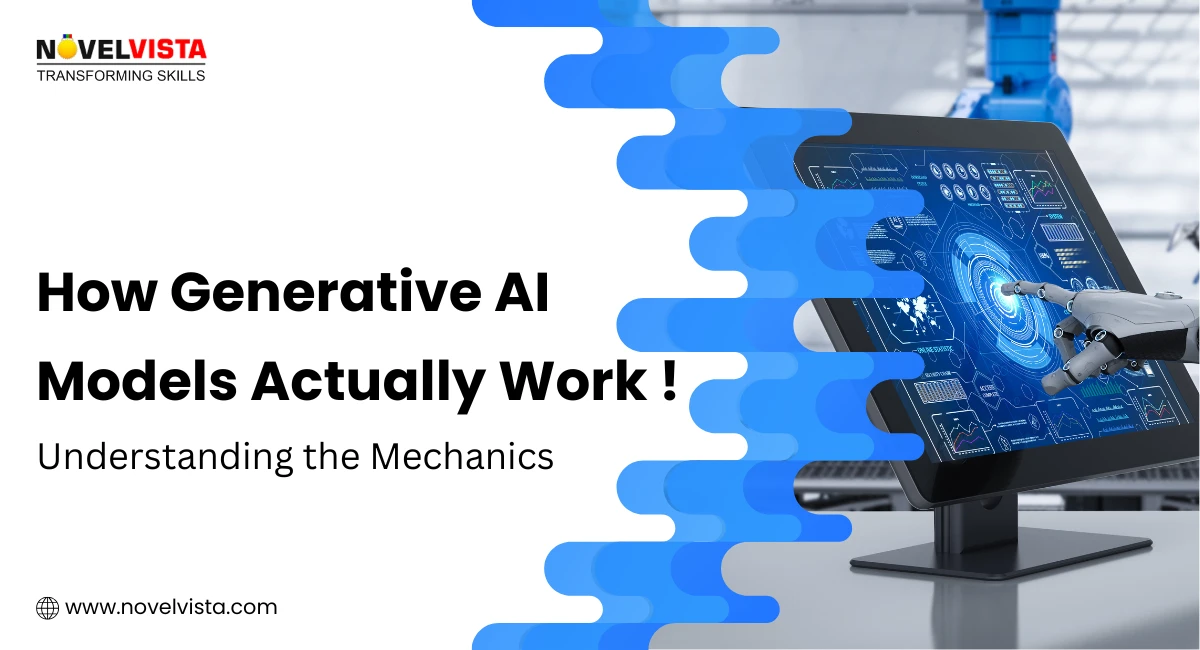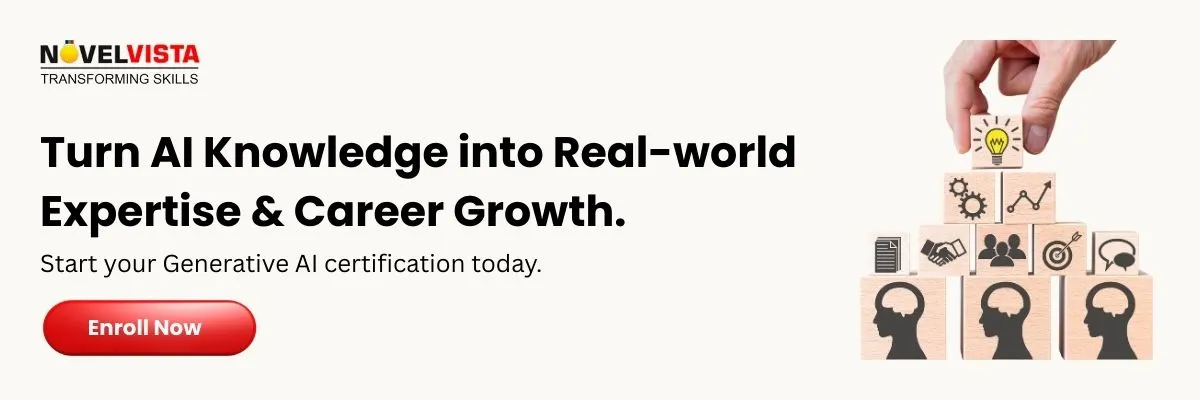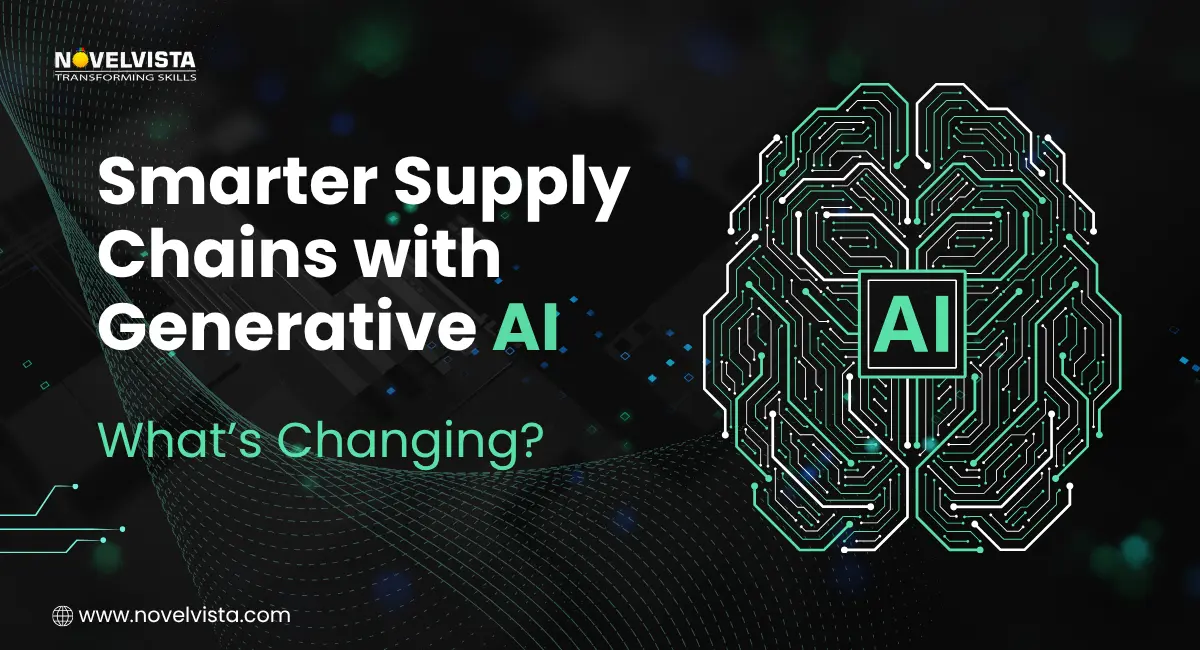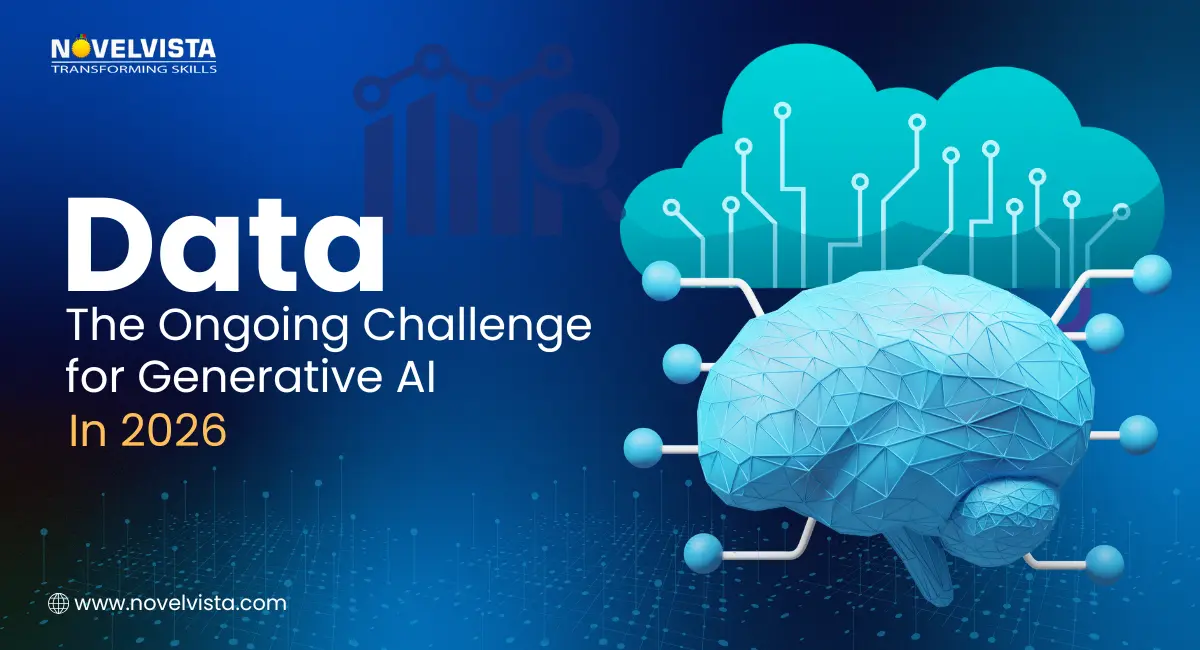Generative AI is no longer just a buzzword; it’s a revolution influencing how we work, learn, build, and create. Over 65% of enterprises worldwide have adopted Generative AI tools, and digital professionals report saving over 40% of their daily effort using AI-powered automation. Yet even with this explosive growth, one question continues to puzzle many: How does Generative AI actually work?
If you’ve ever wondered:
- What’s the engine powering these AI systems?
- How Generative AI works behind the scenes?
- Why Generative AI models create such human-like content?
- What are the mechanics of Generative AI, explained in simple terms?
Then this blog is your complete guide.
Whether you're an IT professional, a student exploring AI careers, a business leader evaluating AI tools, or simply curious about the technology shaping the future, understanding Generative AI explained clearly will help you navigate this rapidly evolving field.
Let’s break it down step-by-step, starting with the basics and smoothly moving into the deeper mechanics behind Generative AI model
Why Understanding the Mechanics Matters
Understanding how Generative AI works helps different people in different ways. For business leaders, it brings clarity, making it easier to separate hype from real value and set practical expectations for AI adoption. Developers gain insight into how models behave, which helps them write better prompts, build stronger integrations, and troubleshoot with confidence. Students benefit by building a solid foundation that makes advanced AI concepts easier to learn. Creators and marketers, on the other hand, gain better control over the quality of content they generate, since knowing how AI interprets patterns leads to clearer, more effective prompts. In short, understanding the mechanics of Generative AI empowers anyone who wants to use the technology more effectively, creatively, and intelligently.
If you want a broader perspective on what’s coming next, you’ll find this breakdown useful: 10+ Generative AI Trends
How Generative AI Models Actually Work
Now let’s unpack how Generative AI works, step-by-step, using a clean and intuitive flow.
1. Data Collection: The Foundation of All Learning
Generative AI models learn from massive amounts of data, text, images, code, audio, and more, and this becomes the foundation of everything they generate. Large datasets help the model identify recurring patterns in language or visuals, giving it a deeper understanding of style, tone, and structure. High-quality, diverse data leads to better outputs because the model becomes more reliable across different tasks. And the overall volume of data improves generalization, allowing the system to perform well even in unfamiliar contexts. This stage is essential to generative AI explained, because all future capabilities depend on how strong the initial data foundation is.
2. Pattern Learning (Feature Extraction)
Once the data is collected, the model begins analyzing it to extract meaningful patterns, a core part of generative AI explained. Text models learn grammar, sentence flow, writing styles, and how tone or emotion shifts, which helps them create natural and coherent responses. Image models learn shapes, lighting, textures, and object placement, allowing them to generate visually accurate and stylistically consistent artwork. This pattern-learning stage is what enables generative AI to understand both language and visuals in a practical, human-like way.
If you're curious about what specific abilities make Generative AI so powerful at understanding and generating patterns, you can explore this dedicated article that unpacks the core capability behind all generative models: What is the Key Feature of Generative AI?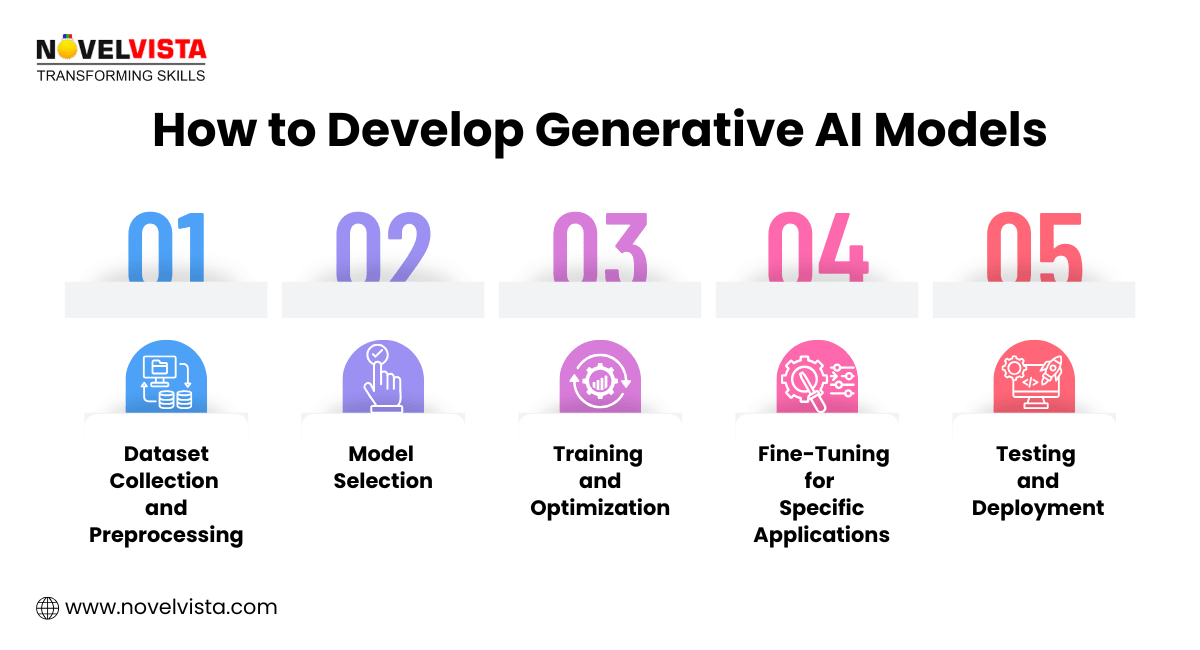
The Training Engine
1. Model Training: Billions of Adjustments Behind the Scenes
Training a Generative AI model is essentially a giant repetition loop where the system makes predictions, compares them with correct examples, and learns from every mistake. During this process, it adjusts billions of internal parameters that shape how future predictions are made, fine-tuning them until the outputs reach high quality. This massive trial-and-error cycle runs on powerful GPU clusters for days or even weeks, allowing the model to learn extremely complex relationships. By the end of training, the system becomes capable of generating realistic, meaningful content based entirely on the patterns it has absorbed, an essential step in understanding how Generative AI works
2. Tokenization: How AI Understands Text
To understand language, Generative AI models break text into small units called tokens, typically words or subwords, and then predict the next token based on probability and context. Each prediction influences the one that follows, creating a smooth sequence that forms coherent sentences and paragraphs. The better the model becomes at token prediction, the more natural its essays, summaries, and conversations sound. These tokens act as the fundamental building blocks of Generative AI models explained at the language-processing level.
Clear, Simple, Step-by-Step Insights Into
How AI Learns, Predicts, and Generates.
Download for Free and Start Your AI Journey Today!
The Model Architectures That Power Generative AI
The Architectures Behind Generative AI
Different AI models use different internal architectures. Let’s break down the big three.
A. Transformers (GPT, Claude, Llama)
Transformers use a mechanism called self-attention to understand context.
-
The model learns which parts of a sentence matter most.
This helps it connect ideas across long text sequences. -
Self-attention improves coherence and relevance.
The AI can maintain meaning even in complex, multi-layered prompts. -
This architecture powers most modern text-generation AI.
It enables advanced tasks like reasoning, summarization, and conversation.
B. Diffusion Models (DALL·E, Midjourney, Stable Diffusion)
These models start with noise and gradually refine it into a clear image.
-
They reverse the process of adding noise to an image during training.
This learned reversal helps them create images from scratch. -
The model improves detail progressively across multiple steps.
The final output appears crisp, artistic, and visually consistent. -
Diffusion handles creativity better than older architectures.
This is why AI-generated art today looks more realistic than ever.
C. GANs (Generative Adversarial Networks)
GANs use two networks that challenge each other.
-
The generator creates content while the discriminator evaluates it.
This competition drives rapid improvement in output quality. -
Both networks refine each other’s weaknesses.
The generator keeps learning until its outputs appear real. -
GANs are widely used in deepfakes, upscaling, and fashion design.
Their strength lies in photorealism.
If you want a deeper look at what sets these systems apart from traditional AI models, here’s a detailed breakdown you’ll find insightful: What Makes Generative AI Unique?
AI’s Human-Like Understanding
1. Context Understanding: What Makes AI Feel “Human”?
Generative AI feels remarkably human because it understands context, not just keywords. It analyzes user intent, allowing it to match the tone, style, and purpose of your prompt. Connecting ideas from earlier and later parts of the text creates responses that flow naturally and logically. This contextual awareness makes instructions clearer and helps the model adapt whether you're asking for a poem, a summary, or a technical explanation. This capability is a key part of how Generative AI works in conversational systems.
2. Reinforcement Learning (RLHF): The Human Alignment Phase
After initial training, the model is refined using human feedback. Humans rate outputs for helpfulness, quality, and safety, and the model learns which responses users prefer. It then updates its behavior to align with those preferences, leading to more accurate, responsible outputs. RLHF also reduces harmful or incorrect responses, making modern models safer than early AI systems.
3. Content Generation: The Final Output
Once trained, the model can:
-
Write articles, scripts, policies, and stories.
It uses learned patterns to generate content tailored to your prompt. -
Produce stunning visuals or concept art.
Image models blend creativity with learned aesthetics. -
Create code, simulations, or product ideas.
AI assists both technical and creative workflows with remarkable efficiency.
This final stage is where all the mechanics of Generative AI come together.
Conclusion: Why Understanding Generative AI Matters Today
Understanding how Generative AI works is no longer optional, it’s a future skill. With the mechanics of generative AI explained clearly, you now know how these systems learn, think, reason, and create.
As AI continues to reshape industries, those who understand the mechanics of Generative AI will be better equipped to use it strategically, ethically, and creatively.
Generative AI is not just a tool, it’s a new way of working, innovating, and imagining possibilities.
Ready to accelerate your career in Generative AI?
Join NovelVista’s Generative AI Professional Training and gain hands-on skills in prompt engineering, LLMs, AI workflows, and real-world enterprise applications. Designed for IT professionals, analysts, architects, and innovators, this program helps you confidently build, deploy, and leverage AI solutions that create real business impact.
Frequently Asked Questions
Author Details

Akshad Modi
AI Architect
An AI Architect plays a crucial role in designing scalable AI solutions, integrating machine learning and advanced technologies to solve business challenges and drive innovation in digital transformation strategies.
Course Related To This blog
Generative AI in Project Management
Generative AI in Risk & Compliance
Generative AI in Retail
Generative AI in Marketing
Generative AI in Finance and Banking
Generative AI for HR and L&D
Generative AI in Cybersecurity
Generative AI in Business
Generative AI in Software Development
Confused About Certification?
Get Free Consultation Call

